An LCR meter, or an Inductance-Capacitance-Resistance meter, is a specialized electronic test instrument used for measuring the electrical properties of passive electronic components, such as resistors, capacitors, and inductors. It is a valuable tool for electronics engineers, technicians, and scientists who work with electronic circuits and components. An LCR meter can provide precise measurements of various electrical parameters of components, helping to characterize their behavior and ensure they meet the desired specifications.
Main Parameters
- Inductance (L): An LCR meter can measure the inductance of coils and inductors, which is a measure of their ability to store electrical energy in the form of a magnetic field. The unit of measurement is the henry (H).
- Capacitance (C): LCR meters can measure the capacitance of capacitors, which is a measure of their ability to store electrical energy in the form of an electric field. The unit of measurement is the farad (F).
- Resistance (R): LCR meters can measure the resistance of resistors, which is a measure of their opposition to the flow of electrical current. The unit of measurement is the ohm (Ω)
- Impedance (Z): Impedance is a complex quantity that combines resistance (R) and reactance (inductive and capacitive components). LCR meters can provide the magnitude and phase angle of impedance, which is valuable for analyzing the behavior of components in AC circuits.
- Quality Factor (Q): Q is a measure of how efficiently an inductor or capacitor stores and releases energy. It's an important parameter in resonant circuits.
- Dissipation Factor (D): The dissipation factor, often denoted as "D", is a measure of energy loss in a component. It's crucial for understanding the efficiency and performance of capacitors and inductors.
LCR Meters Price List
To help you make a better choice, here is a price list of sisco for you.
| Product picture | Product name | SKU | Price |
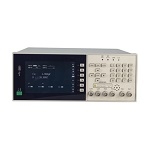 |
Digital LCR Meter, 20Hz~1MHz | SISCO-LCRM-20100 | $3,739.54 |
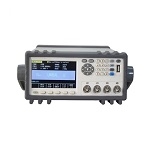 |
Digital LCR Meter, 20Hz~200kHz | SISCO-LCRM-2020 | $1,489.23 |
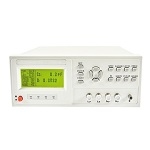 |
Digital LCR Meter, 50Hz~100kHz | SISCO-LCRM-5010 | $522.69 |
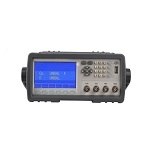 |
Digital LCR Meter, 50Hz~200kHz | SISCO-LCRM-5020 | $1,396.62 |
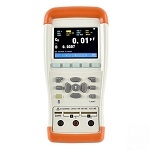 |
Handheld LCR Meter, 100Hz~100kHz | SISCO-LCRM-1010 | $504.62 |
Instructions for Use
Safety Precautions
- Ensure that you are working in a safe environment and that the LCR meter is properly grounded.
Preparation
- Power On: Turn on the LCR meter using the power switch.
- Connections: Connect the component you want to measure to the LCR meter. Ensure proper connections: Connect one end of the component to the "L" (inductance) terminal and the other end to the "C" (capacitance) terminal if it's an inductor or capacitor. Connect a resistor between the "R" (resistance) terminal and the "COM" (common) terminal. Ensure good contact and clean connections to minimize measurement errors.
Settings and Calibration
- Set the Measurement Parameters: Configure the LCR meter for the specific parameter you want to measure (e.g., inductance, capacitance, resistance).
- Test Frequency: Choose an appropriate test frequency for your measurement. Some components may behave differently at different frequencies.
- Range Selection: Select the measurement range based on the expected value of the component to ensure accurate results.
- Calibration: Some LCR meters may require periodic calibration to maintain accuracy. Consult the user manual for calibration instructions.
Measurement
- Trigger Measurement: Press the "Measure" or "Test" button to initiate the measurement. The LCR meter will apply an AC signal to the component and measure its response.
- Display: The LCR meter will display the measurement results on its screen. Typical parameters include impedance (Z), inductance (L), capacitance (C), resistance (R), phase angle (θ), quality factor (Q), and dissipation factor (D).
Analysis and Recording
- Record the measurement results for your documentation. This is important for quality control, troubleshooting, or design purposes.
- Analyze the results, considering the desired specifications and tolerance limits for your application.
Additional Tips
- Use short, low-inductance cables which leads to minimizing interference in your measurements.
- If measuring small-value capacitors or inductors, account for the parasitic capacitance and inductance of the test fixtures and leads.
- For components with multiple terminals, make sure you understand the correct connections and select the appropriate measurement configuration (series or parallel).
- Follow the manufacturer's guidelines and recommendations for your specific LCR meter model.
Power Off
- After completing your measurements, turn off the LCR meter to conserve power and protect the instrument.
LCR meters come in various types, including handheld portable models and benchtop instruments. They are widely used in fields such as electronics testing, quality control, research and development, and the design and maintenance of electronic circuits and systems. The precise measurement capabilities of LCR meters make them essential tools for evaluating and characterizing passive electronic components.sisco.com provides high quality and high precision different types of LCR meters to choose from, if you are interested in it, welcome to click, we provide professional service and consulting visits.

